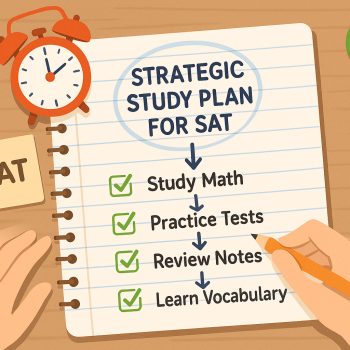AP vs SAT: Writing Depth (FRQs/Essays) vs Multiple-Choice Precision What Every Student and Parent Should Know
Collegeboard exams loom large on many high schoolers calendars. Two names you ll hear again and again are AP (Advanced Placement) and the Digital SAT. On the surface they both assess academic readiness, but under the hood they demand very different writing skills. AP free-response questions (FRQs) reward depth, structured argument, and evidence synthesis. The Digital SAT prizes careful reading, rapid reasoning, and precise answer selection in a multiple-choice format. This guide walks you through the differences, how to train for each, and how to build a study plan that leaves you confident on test day with practical tips and study strategies parents and students can actually use.
Why the distinction matters
Think of AP FRQs as an invitation to have a conversation with the grader. You get space to show your thinking, to layer evidence, and to craft an argument that reflects nuance. The SAT s multiple-choice sections, in contrast, are more like a sprint of precision reading closely, eliminating distractors, and choosing the best answer among carefully worded options.
Understanding this core difference changes how you prepare. If you train only for one mode, you ll be ill-equipped for the other. Fortunately, many of the underlying academic skills clear writing, logical organization, and textual analysis transfer across both. The key is practicing those skills in the format you ll be tested on.

AP Free-Response Questions: Depth, Voice, and Evidence
AP exams that include FRQs (for example AP English Language and Composition, AP U.S. History, AP Biology) expect students to produce responses that do more than recall facts. Success here rests on three pillars:
- Argument and Thesis: A clear, defensible claim that answers the prompt.
- Evidence and Analysis: Specific, relevant evidence from texts, experiments, or historical sources plus interpretation that links evidence to the claim.
- Structure and Clarity: An organized response that guides the reader through reasoning with transitions and purposeful paragraphs.
What graders look for
Grading rubrics for FRQs reward content that addresses the prompt directly, demonstrates comprehension of sources, and shows higher-order thinking synthesis, evaluation, and analysis. Partial or unfocused answers may earn some credit, but the highest scores come from precise claims backed by well-explained evidence and clean structure.
Concrete strategies to deepen FRQ performance
- Start with a one-sentence thesis that answers the prompt exactly. If you can t distill it to one sentence, your response is likely unfocused.
- Plan for 2 4 body paragraphs that each handle a single idea: a piece of evidence, its explanation, and how it ties back to the thesis.
- Use specific evidence. Vague references (“some texts say”) don t earn the same weight as named authors, dates, or data.
- Balance summary with analysis. Don t spend half your response re-telling the source; analyze its significance.
- Practice timed writing regularly. Simulated FRQs with self- or peer-review help you learn what finished looks like within the time limit.
- Revise the thesis if the evidence takes you in a slightly different direction but make the revision deliberate and explicit.
Digital SAT Multiple-Choice: Precision, Speed, and Strategy
The Digital SAT is about accuracy under time pressure. Multiple-choice questions test comprehension, grammar, data interpretation, and reasoning. There s less room to show off original voice and much more need to select the single best answer from choices that are intentionally similar.
What the multiple-choice format demands
On the SAT, partial understanding or a plausible-sounding answer won t do if it s not the most accurate choice. The exam writers design distractors (incorrect choices) that exploit common errors overgeneralization, misreading the passage, or ignoring qualifiers so test-wise readers must be precise.
Practical techniques for multiple-choice precision
- Read the question stem first: Knowing what you re being asked focuses your passage reading.
- Predict before you look at options: Try to frame the answer in your own words. This reduces the influence of tempting distractors.
- Use process of elimination: Cross out obviously wrong answers and compare the remaining choices against your prediction.
- Watch for qualifiers: Words like “always,” “never,” “only,” and “most” matter; they often determine whether an answer is too strong or just right.
- Manage your time: Set target times per passage or question block and stick to them skip and mark questions that are taking too long, then return.
- Practice with digital interface skills: The Digital SAT s layout and navigation can affect reading patterns and pace simulate that environment in practice.
How to convert multiple-choice practice into better reading and writing
Multiple-choice drills improve careful reading, vocabulary-in-context, and the ability to identify the strongest claim. These skills feed back into FRQ success, because being precise about what a passage actually says helps you select relevant evidence and avoid misinterpretation.
Side-by-Side: Skills, Mindset, and Preparation
Below is a table that highlights the core differences and the overlap in skills between AP FRQs and the Digital SAT multiple-choice sections.
| Feature | AP FRQs / Essays | Digital SAT Multiple-Choice |
|---|---|---|
| Primary Skill Tested | Analytical writing, synthesis, extended reasoning | Quick comprehension, precise reasoning, answer selection |
| Time Structure | Longer blocks, planning and drafting within limits | Shorter, timed items with strict pacing |
| Answer Format | Open-ended, scored by rubric | Fixed-choice; one best answer |
| Grading Emphasis | Depth, evidence, organization, clarity | Accuracy, avoidance of traps, efficient elimination |
| Useful Study Activities | Timed essays, peer review, source synthesis practice | Practice sets, timed sections, error pattern analysis |
| Transferable Strengths | Clear thesis and structured thinking | Close reading and precise language parsing |
Practical Study Plan: Combining Both Worlds
Because AP and SAT demands overlap, you can design a study plan that builds complementary strengths. Below is a 10-week sample plan a busy junior could follow while balancing schoolwork.
10-Week Hybrid Study Blueprint (Approx. 5 7 hours/week)
- Weeks 1 2 Baseline and Strategy
- Take a timed Digital SAT practice section and a timed AP FRQ. Record your scores and timing behaviors.
- Identify one big weakness for each test (e.g., data interpretation on SAT; integrating multiple sources on AP).
- Weeks 3 5 Skill Building
- Two days/week: Short, focused SAT practice blocks (45 60 minutes). Review every error carefully what trap pulled you in?
- One day/week: Timed 40 60 minute AP FRQ practice. Focus on clear thesis and evidence use.
- One day/week: Vocabulary-in-context and grammar drills these help both exams.
- Weeks 6 8 Integration and Simulation
- Alternate full practice SAT sections with full AP FRQ sets under timed conditions every 7 10 days.
- Peer-review or tutor sessions to get outside feedback on FRQs; someone who reads your writing differently will spot assumptions you missed.
- Weeks 9 10 Final Polishing
- Simulate test days. Practice waking up, timing, and realistic break scheduling.
- Focus on error logs short targeted drills on your most common mistakes. Solidify test-day strategies: which questions to skip, how to outline quickly, and how to revise a thesis in 2 minutes.
How personalized tutoring helps (where Sparkl fits in)
Personalized tutoring can dramatically reduce wasted effort. A 1-on-1 tutor helps diagnose your unique error patterns do you stray in timed essays, or do SAT distractors look convincing? Sparkl s personalized tutoring offers tailored study plans, expert tutors for both AP and SAT formats, and AI-driven insights to highlight weak areas quickly. That combination can speed up progress by focusing practice on the right tasks, rather than more of what you already do well.
Common Pitfalls and How to Avoid Them
Many students fall into recurring traps. Below are the most common, with simple countermeasures.
- Pitfall: Treating FRQs like short-answer recall.
Fix: Build an argument. Use evidence deliberately and explain its relevance. - Pitfall: Letting distractors lure you on multiple-choice items.
Fix: Predict answers before looking at choices and eliminate by comparing to the passage or data. - Pitfall: Practicing only untimed or only timed.
Fix: Alternate timed drills with longer, reflective review sessions. - Pitfall: Ignoring feedback.
Fix: Use peer review, teacher comments, or a tutor to get external perspective and track improvements.
Examples: Turning Weakness into Strength
Here are two short, concrete examples that show how a small change makes a big difference.
Example 1 From vague to potent FRQ thesis
Weak: “Some authors think technological change affects society.”
Strong: “In the early twenty-first century, technological change reshaped workplace expectations by increasing demand for continuous learning, widening the skills gap between workers, and shifting employer incentives toward automation forcing a redefinition of vocational education.”
Notice the stronger version names a time frame, lists specific effects, and signals the type of evidence the response will use.
Example 2 Choosing precision on a multiple-choice question
Predictive habit: Read the question, summarize your answer in a phrase, then use the choices to confirm or reject. If the top two answers both look plausible, ask: “Which one follows directly from the passage s language or data?” The SAT usually rewards literal textual support over broad inference.
Parent Corner: How to Support Without Micromanaging
Parents play an essential role by creating an environment that encourages steady practice and emotional resilience. Here s how to help effectively:
- Encourage a consistent schedule rather than last-minute cramming.
- Ask about progress and setbacks, but don t grade drafts encourage the student to seek specific feedback from teachers or tutors.
- Support healthy test-day routines: sleep, nutrition, and a calm morning.
- If hiring tutoring help, ask for a plan and measurable goals. Tutors who show how each session advances a skill are more effective than those who simply assign more work.
Measuring Progress: What Improvement Looks Like
Progress isn t just a higher number on a practice test (though that s important). It s also more reliable timing, fewer careless errors, clearer thesis statements, and the ability to self-correct during review. Keep simple logs:
- Record scores and time per section for SAT practice.
- Keep a portfolio of FRQ drafts and notes showing revision points and rubric-aligned feedback.
- Track recurring mistakes and create 10 15 minute micro-drills to address them weekly.
When to Focus on One Test Over the Other
Timing matters. If your AP exam is in May and the SAT is later in the year, front-load AP practice. If college applications are imminent and you need a strong SAT score soon, prioritize SAT pacing and accuracy. Many students take AP exams to earn college credit while preparing for the SAT in parallel plan so that each session has clear objectives (one day for deep writing, one for precision drills).
Final Thoughts: Build Habits, Not Just Skills
AP FRQs reward patience and layered thinking. The Digital SAT rewards reliability and clarity under pressure. But the same intellectual muscles clear reading, evidence-based reasoning, and disciplined revision serve both. Practice deliberately, review ruthlessly, and get outside feedback early.
If you re looking for a boost, personalized tutoring can be a game changer. Sparkl s approach pairing expert tutors with tailored study plans and AI-driven insights helps students focus on what matters and make steady, trackable progress without burning out.

At the end of the day, both AP and SAT are opportunities to show growth. The best preparation is consistent, evidence-driven, and tailored to the way you learn. Embrace that process, lean into feedback, and remember that improvement is a series of small wins one clear thesis, one correct elimination, one revised draft at a time.
Quick Checklist Before Your Next Practice Session
- Set a specific goal (e.g., “Write a clear thesis in 30 seconds” or “Reduce grammar errors by 50% this week”).
- Simulate the testing environment for at least one practice session per week.
- Log errors and categorize them content, interpretation, or careless mistake.
- Get at least one external review per week (teacher, peer, or tutor).
- Balance depth training (FRQs) with precision drills (SAT multiple-choice).
Good luck and remember: clarity beats cleverness on a tight clock, and detailed evidence often beats flashy language on a rubric. With steady practice and the right guidance, you ll be able to move confidently between the depth of AP writing and the precision of the Digital SAT.
















No Comments
Leave a comment Cancel